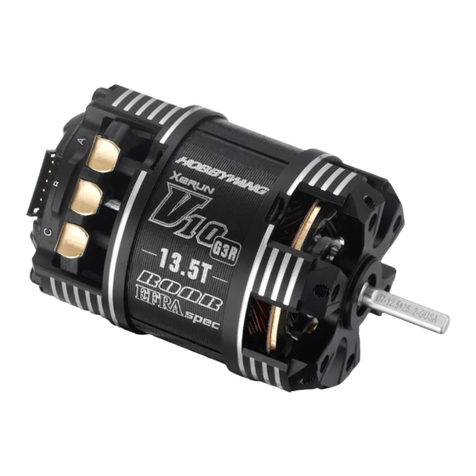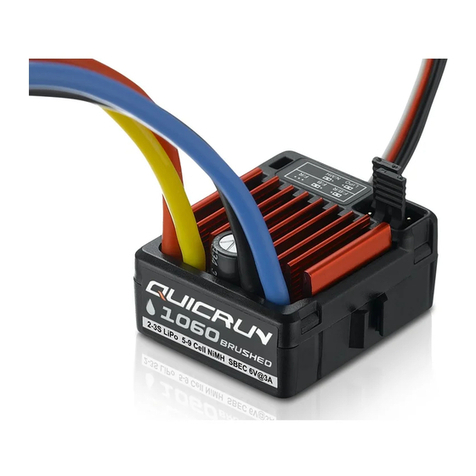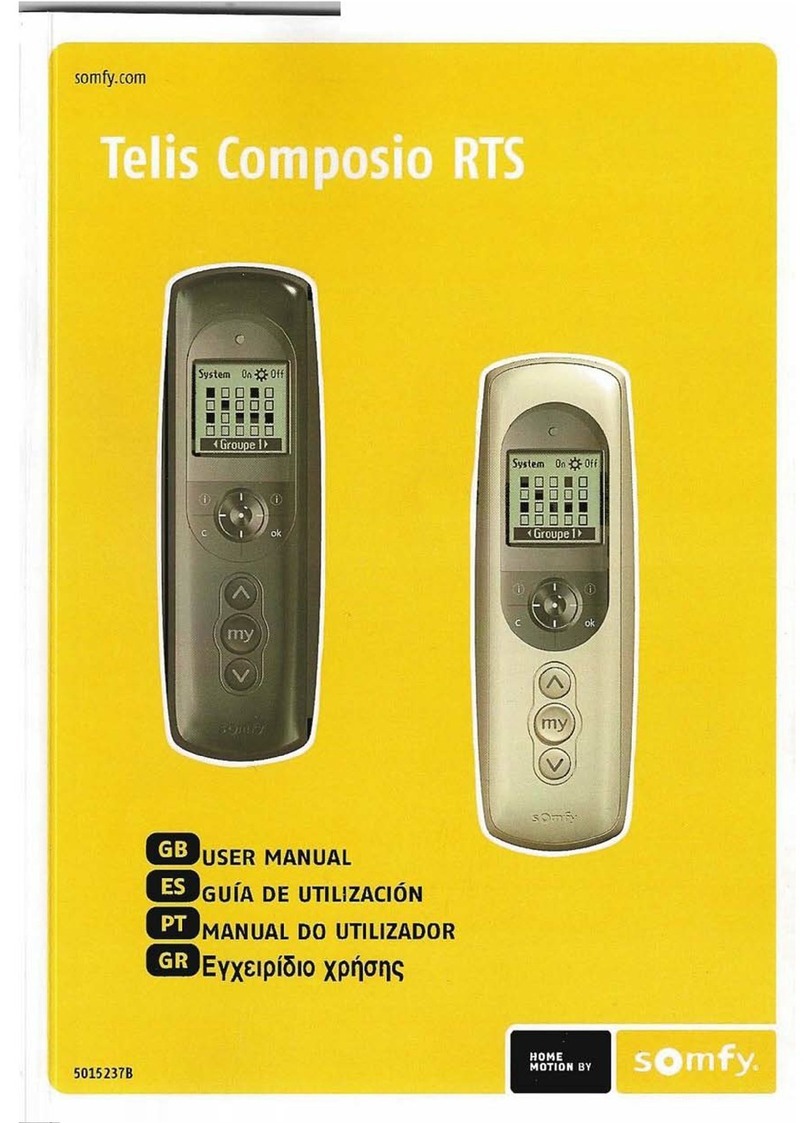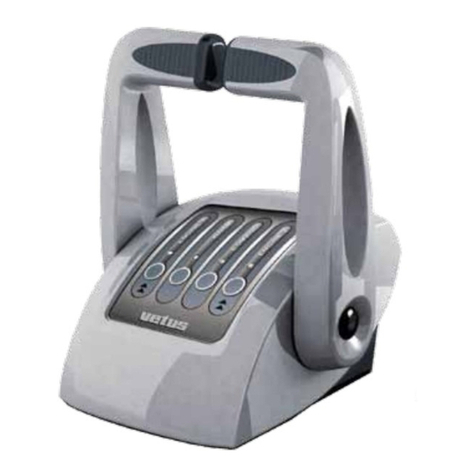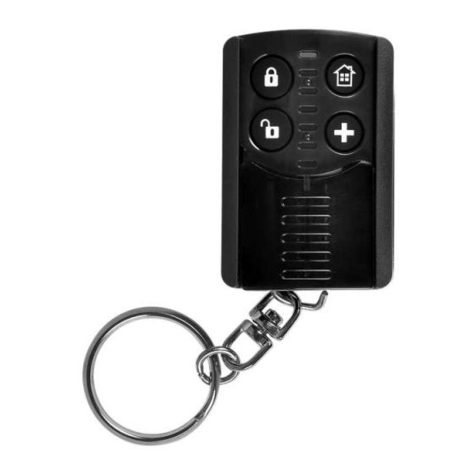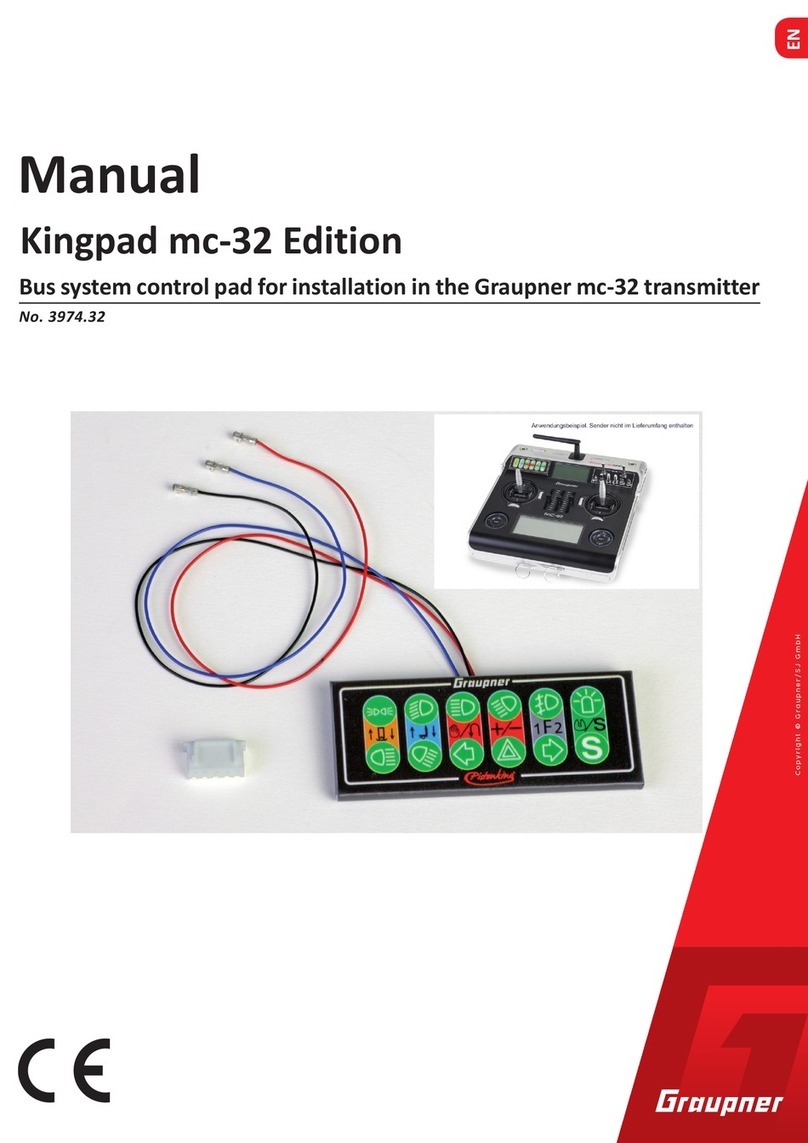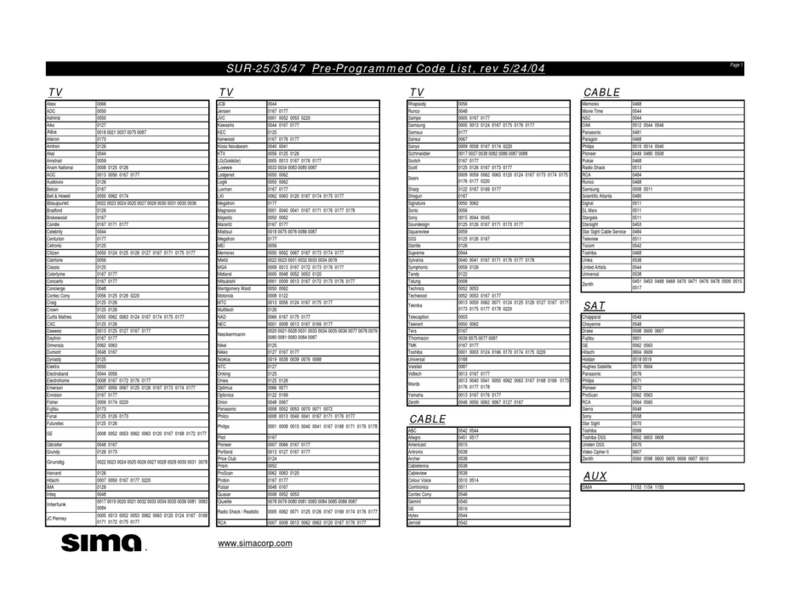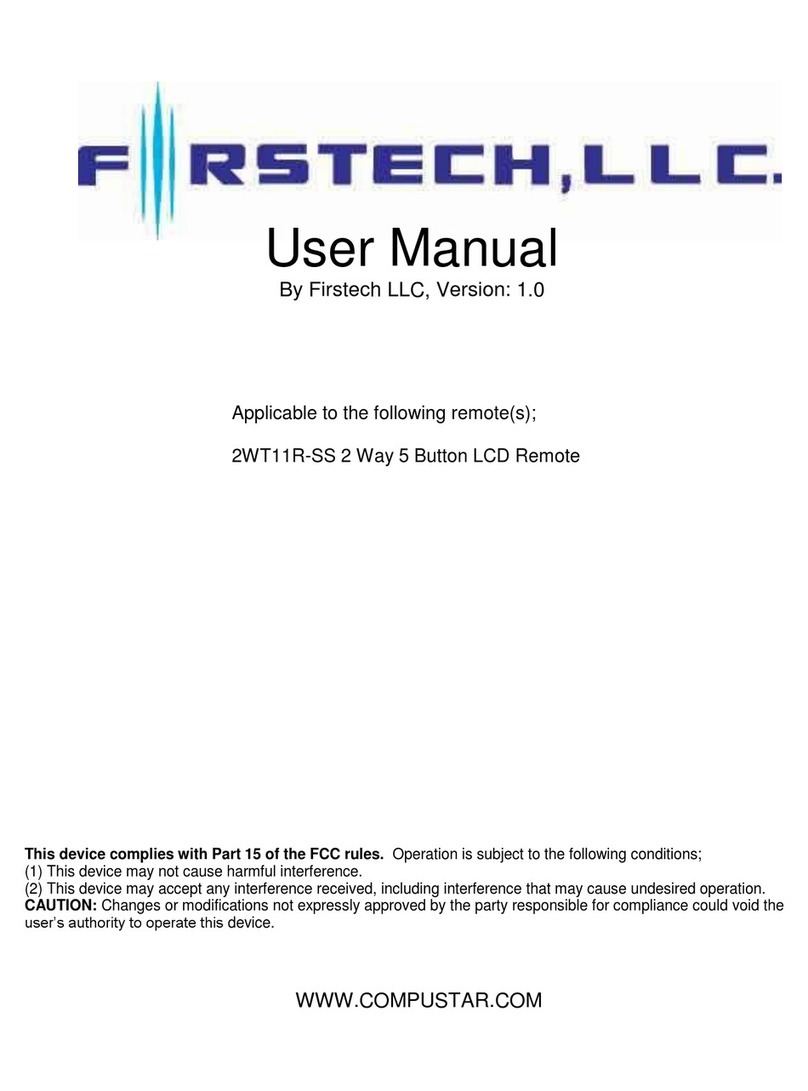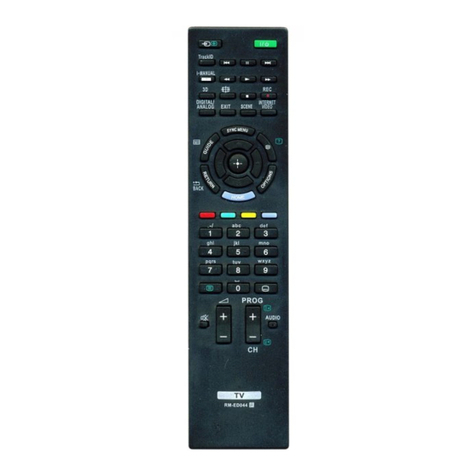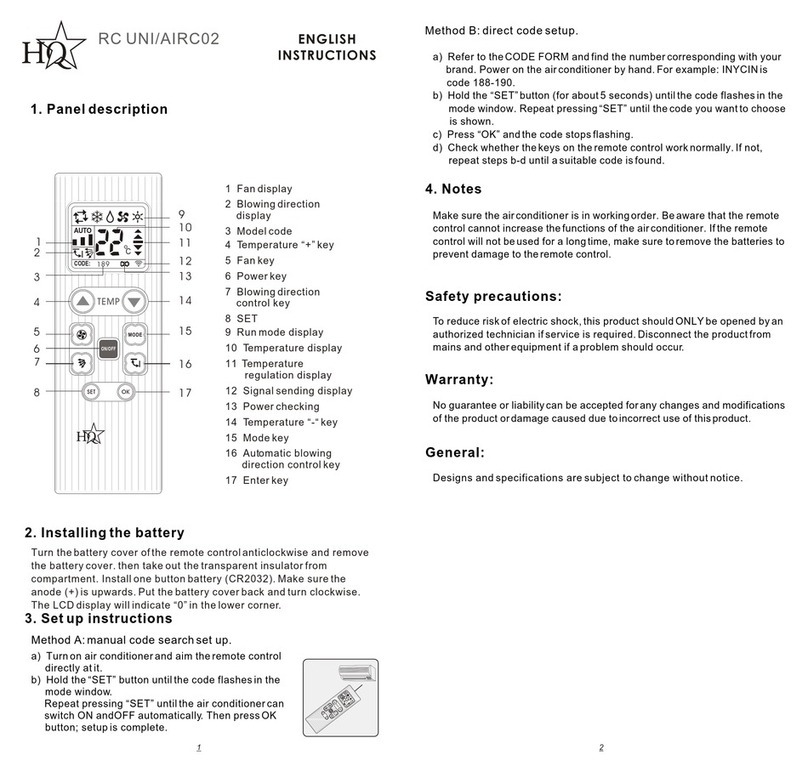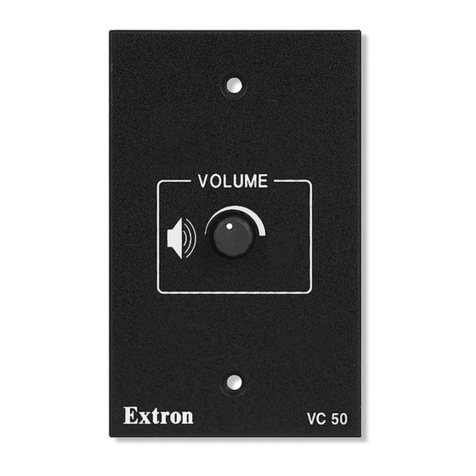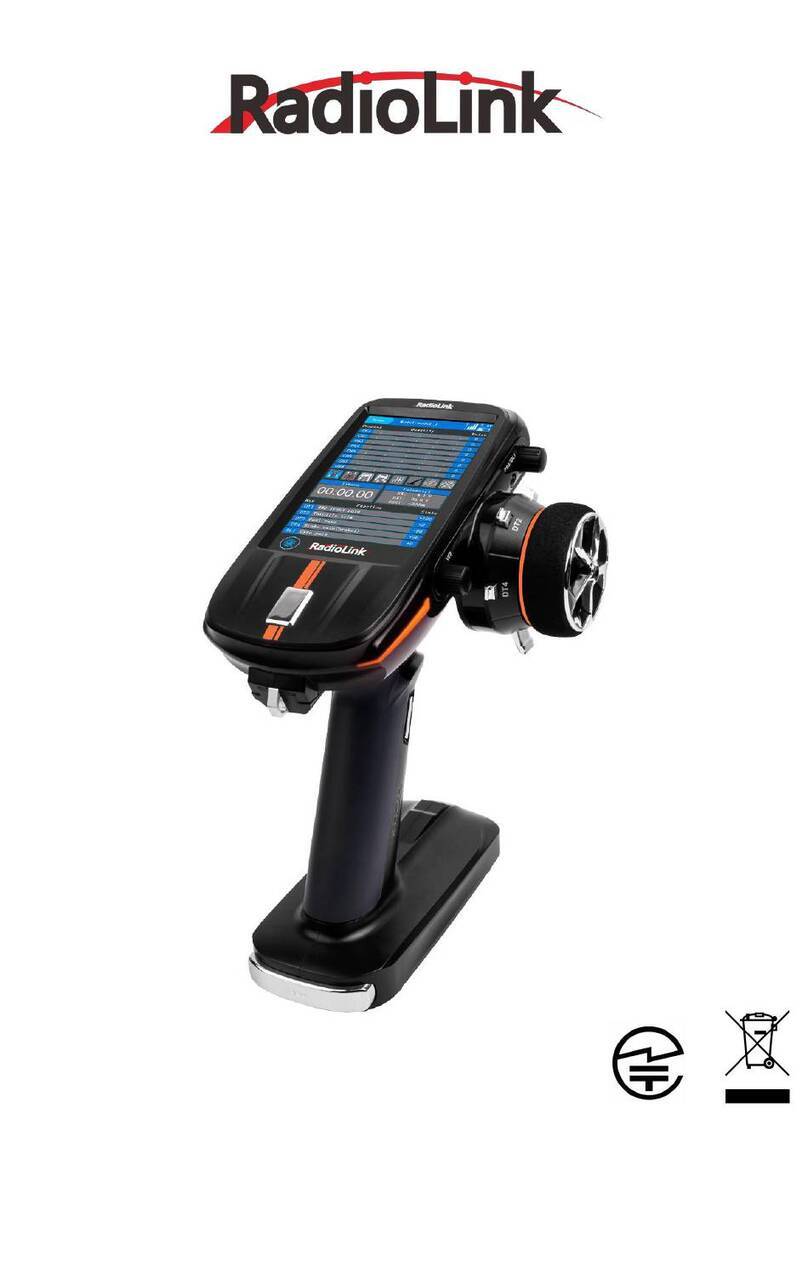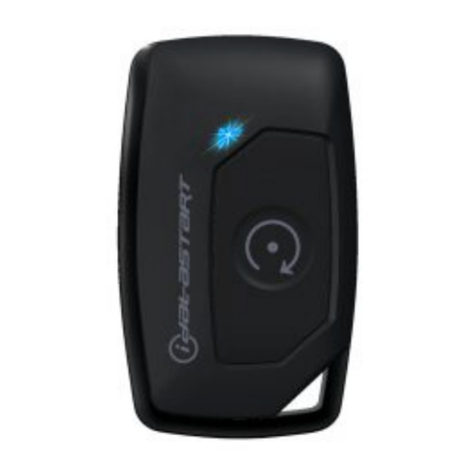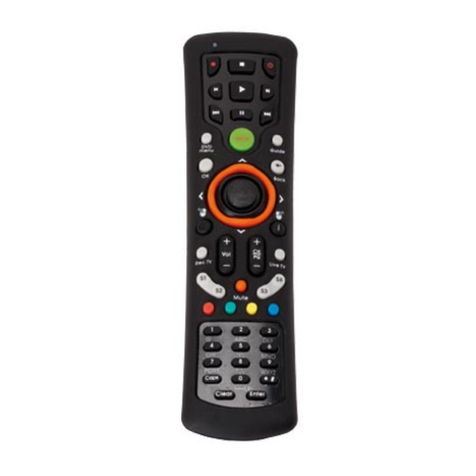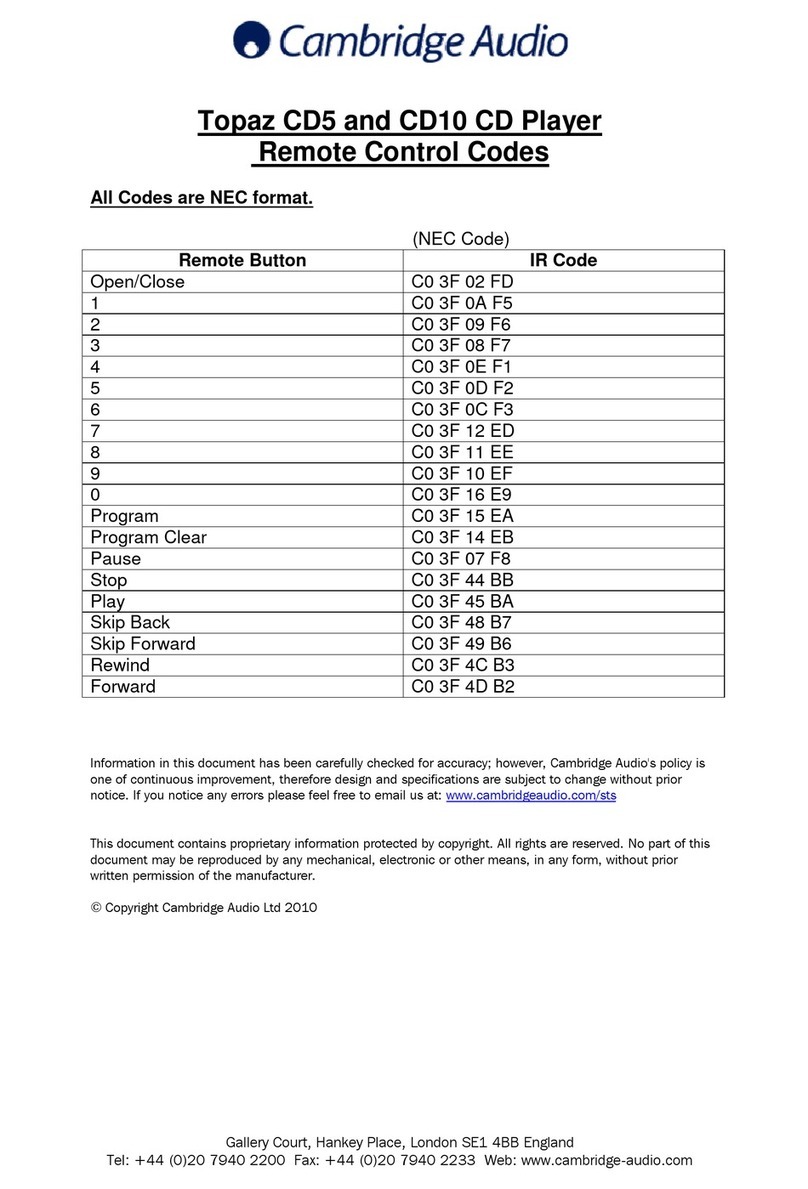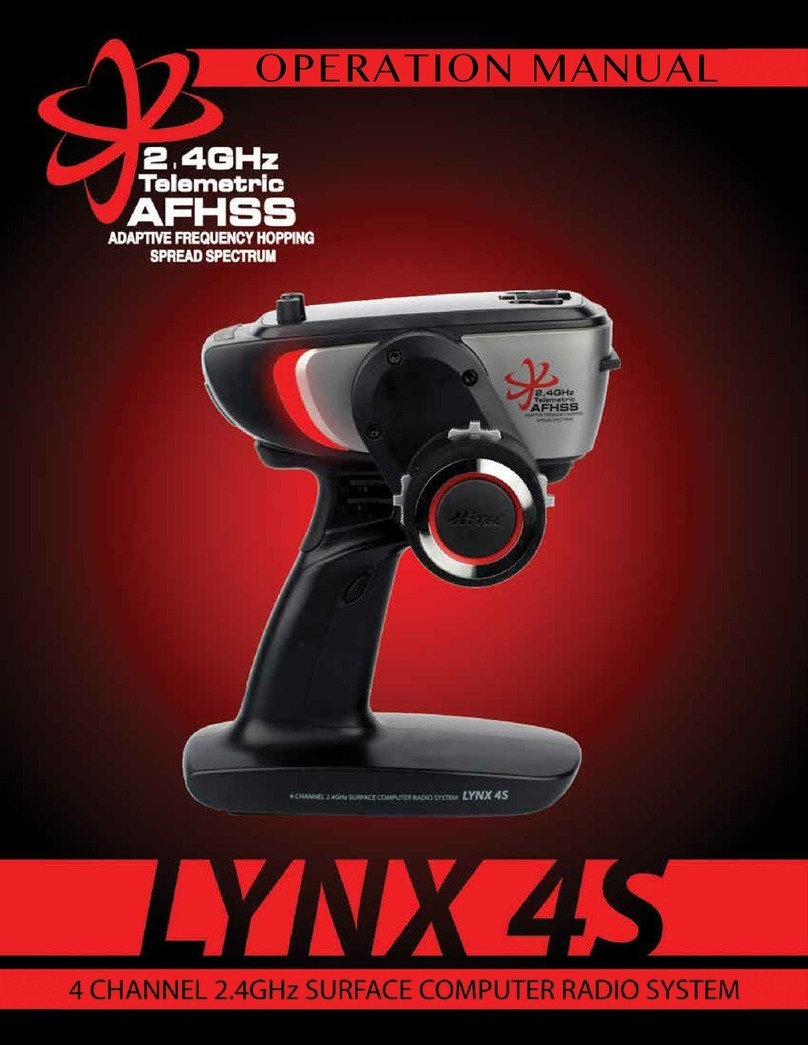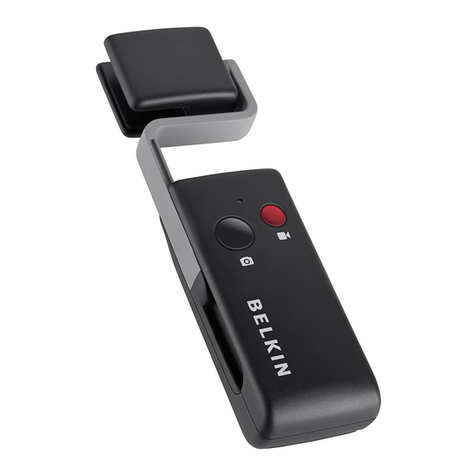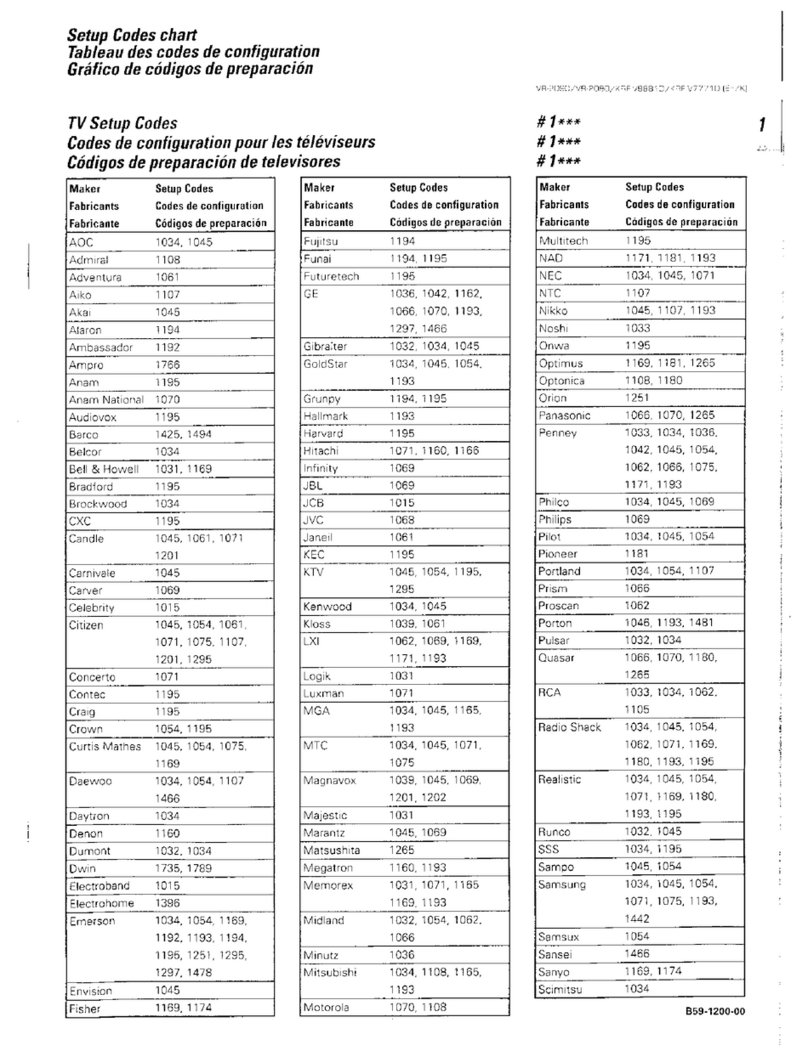Hobby-Wing HW6123 User manual

User Manual of Remote for Skateboard HW6123ENG-20170822
Thank you for purchasing this HOBBYWING product! Any improper operation may cause the unit to function abnormally or even
damage relevant devices, so we strongly recommend reading through this user manual before use. Because we have no control over
the use, installation, or maintenance of this product, no liability may be assumed for any damage or losses resulting from the use of
the product. We do not assume responsibility for any losses caused by unauthorized modifications to our product. Besides, we have
the right to modify our product design, appearance, features and usage requirements without notification. We, HOBBYWING, are
only responsible for our product cost and nothing else as result of using our product.
01 Specifications
02 Image
03 Functions & Instructions
1) Power On
(With the remote powered off), press the “Button A” (on the remote) for 1 second, the remote vibrates a short vibration, enters the
connecting mode, and the signal LED starts to flash Red slowly (once a second). (With the board powered off), press the “Power”
button on the board (for 0.2 second) to enter the “connecting” mode, and the Red LED on it starts to flash slowly (once a second).
Note: the signal LED on the remote and the Red LED on the board turn solid after they are connected to each other.
2) Power Off
(Power off) manually: (with the remote & the board powered on), pressing the “Button A” on the remote for 2 seconds can turn off
the remote, the remote will vibrate a short vibration after the press; pressing the “Power” button on the board for 1 second can turn
off the board.
Note: if the remote is still on after the board is turned off, the signal LED on the remote will flash Red slowly and vibrate once to
remind the user. Similarly, if the board is still on after the remote is powered off, the Red LED on the board will flash slowly (to warn
the user.)
(Power off) Automatically: if the user let the board stay still with no further operation for 5 minutes, then the remote and the board
will turn off automatically.
3) Connecting & Binding (Remote & Board are bound before leaving the factory)
(With the remote & the board powered off,) press the “Power” button on the board for 5 seconds, the Red LED (on it) starts to flash
rapidly to indicate that the board enters the binding mode; then press the “Button A” on the remote for 5 seconds, the Signal LED (on
it) starts to flash Red rapidly to indicate that the remote enters the binding mode, and the remote vibrates two short vibrations and one
long vibration to indicate that the binding succeeds. The signal LED on the remote and the Red LED on the board turn solid when
the binding succeeds.
Note: when using a new remote and a new board, there is no need to press either the Power button (on the board) or the Button A (on
the remote) for 5 seconds to bind them. They enters into the binding mode when they are powered on.
4) Power Indicators
Remote Power Indicator (a single LED): after the remote is powered on, if it detects the power is less than 25% (which can barely
support an one-hour operation), the Remote Power LED comes on Red; if the power is sufficient (that is the power can support an
operation of at least one hour), then the Remote Power LED comes on Green.
If there is only 5% of power (which can only support a 15-minute operation) left, the remote will vibrate a double, long vibration
(vibrate for 0.5 second, pause for 0.5 second and then vibrate again for 0.5 second ) and the Remote Power LED starts to flash Red
slowly (once a second); if there is only 2.5% of power left, the remote will vibrate a double, long vibration again (the same as the
previous) and the Remote Power LED starts to flash Red slowly; and if the power is below the regulated value (3.4V) for safe use
and the board stops,the remote will vibrate a short vibration and then turn off automatically.
Board Power Indicator (4 LEDs in a row): one LED comes on to indicate there is still 25% of power, one LED flashes to indicate
there is only 12.5% of power left. For example, if the power ranges from 62.5% to 75%, then the four LEDs will display in this way
“○●●●”; if the power ranges from 50%~62.5%, then the four LEDs will display in this way “○☉●●”; if the power is below 25%,
the remote will vibrate a double, long vibration and the four LEDs will display in this way “○○○●” ; if the power is below 12.5%,
the remote will vibrate a double, long vibration and the four LEDs will display in this way “○○○☉”; and if the voltage goes below
the regulated value for safe use, then the power output will be cut off. At this time, it’s better to stop using as soon as possible.
Notes: the remote will display the power of the remote & the board for 2 seconds and then stop when it’s powered on and connected
to the board. Press the Button A at any time can re-trigger the display of the power of the remote & the board.
the remote only displays the power of the remote when the board is not connected (to the remote). Attention! “●” means “solid”, “☉”
means “flash” and “○” means “die out”.
5) Throttle/Brake Control
User can move the “throttle scroll wheel” forward to speed up, and move it backward to brake.
Notes: Do not move the “throttle scroll wheel”when pressing the Button A (/Power Switch). If you see the four LEDs (on the
remote) flash in the following way: “●○○●”,“○●●○”,“●○○●”,“○●●○”..., then please check if the “throttle
scroll wheel”is at the neutral/zero throttle position.
6) Switch of Skateboard Direction
When the board is moving forward, if the user moves the Switch C backward, the remote will vibrate a single, short vibration (0.1
second), the four LEDs will flash one by one from front to back to indicate the “Backward mode”. When the board is moving
backward, if the user moves the Switch C forward, the remote will vibrate a single, short vibration, the four LEDs will flash one by
one from back to front to indicate the “Forward mode”.
Note: this operation effects only when the “throttle scroll wheel” is at the neutral position.
7) Switch of Gears
There are two gears available for the short board: 1st gear & 2nd gear.
In 1st gear, the speed ranges from 0 to 10km per hour; in 2nd gear, the speed ranges from 0 to 16km per hour.
When in 1st gear, if press the Button B, the remote will vibrate a single, short vibration, the four board power LEDs will flash one
by one from one end to the other end to indicate that the board is in 2nd gear now.
When in 2nd gear, if press the Button B, the remote will vibrate a single, short vibration, the four board power LEDs will flash one
by one from one end to the other end to indicate that the board is in 1st gear now.
There are three gears available for the long board: 1st gear, 2nd gear, and 3rd gear.
In 1st gear, the speed ranges from 0 to 12km per hour; in 2nd gear, the speed ranges from 0 to 24km per hour; in 3rd gear, the speed
ranges from 0 to 30km per hour.
When in 1st gear, if press the Button B, the remote will vibrate a single, short vibration, the four board power LEDs will flash one
by one from one end to the other end to indicate that the board is in 2nd gear now.
When in 2nd gear, if press the Button B, the remote will vibrate a single, short vibration, the four board power LEDs will flash one
by one from one end to the other end to indicate that the board is in 3st gear now.
Model
Remote for Skateboard HW6123
Battery Voltage/Capacity
3.7V/400MAH
Charging Port
Micro USB
Charging Time
1H
Communications
2.4G
Effective Distance
40m (Open Field)
Weight
55g
Compatible with ESC(s)
ESC-Skateboard-HW9006/HW9007

User Manual of Remote for Skateboard HW6123ENG-20170822
When in 3rd gear, if press the Button B, the remote will vibrate a single, short vibration, the four power LEDs on the board will
flash one by one from one end to the other end to indicate that the board is in 1st gear now.
Note: this operation effects only when the “throttle scroll wheel” is at the neutral position. The specific gear and speed can be
adjusted by the specific ESC the user uses.
8) Charging
Charging the remote: the remote vibrates once after it’s connected to a power supply via the charging cable and the remote
power LED comes on Red and turns to Green when it’s fully charged.
Note: the remote can not be used during the charging, it vibrates a single, short vibration and powers off automatically after
removing the charging cable.
Charging the board battery: with the board powered off, connect it to a power supply via the charger/adapter, it automatically
enters the charging mode, and the four Red board power LEDs come on; with the board powered on, connect it to a power
supply (via the charger/adapter), it enters the charging mode and the four Red board power LEDs come on. The board will
automatically turn off after removing the charger/adapter.
Note: During the charging, the board is not connected to the remote or it doesn’t function even if it’s connected to the remote. In
other words, the motor & ESC on the board stop functioning during the process.
04 Troubles & Warning Tones
1) Low Voltage
1When the remote power is only 5% (for a 15-minute operation), the remote will vibrate a double, long vibration and the remote
power indicator (a LED) will flash Red rapidly; when the power is only 2.5%, the remote will vibrate a double, long vibration
again, and the LED flashes Red rapidly; and when the voltage goes below the regulated value (3.4V) and the speed(of the
skateboard) is below 3km/h for safe use, the remote will automatically turn off.
2When the board power is below 25%, the remote will vibrate a double, long vibration and the board power indicator (4 LEDs)
will display in this way “○○○●”; when the power is below 12.5%, the remote will vibrate a double, long vibration and the 4
LEDs will display in this way “○○○☉”; and when the voltage goes below the regulated value for safe use, then there will be no
more throttle output and the throttle value will be automatically and slowly reduced to zero(the process will take no more than 3
seconds). At this time, any throttle input will not take effect, only brake input works and you can brake manually.
Note: It’s better to stop using and charge the corresponding device when the warning (due to low remote power or
board power) is given for the first time. Otherwise, the LiPo battery will be damaged due to over-discharge .
2) Signal Loss
The remote will vibrate once when losing signals for 0.2 second, if the board is during acceleration, the “throttle scroll wheel” will be
back to the neutral position immediately and automatically, and then brake slowly and automatically; if the board is during braking,
then it will slowly increase or decrease to a fixed brake force. The remote will enter the searching board mode when signals are lost,
it will vibrate once and stop braking slowly when it finds one and re-connect to the one successfully, the board can only resume
normal operation after moving the “throttle scroll wheel” to the neutral position.
3) Motor Lock-up
When the motors are locked up or stuck, the remote will keep vibrating intermittently and the board power indicator (4 LEDs) will
intermittently flash in this way “○●○●”“●○●○”“○●○●”“●○●○”..... In that case, please stop running the board and check
if the motor(s) are stuck by some foreign material, remove the material immediately and then run the board.
4) Overheat
When the operating temperature of the ESC/motors is above 100°C or below 0°C, the remote will vibrate once and the board power
indicator (4 LEDs) will intermittently flash in this way “○●●●”“●●●○”“○●●●”“●●●○”......, the motor will operate with a
reduced power (about 25% throttle).
Note: the user needs to pay attention to the ESC & motor temperatures. When the operating temperature of the ESC/motors is high,
he/she needs to find the cause, and use it after the cause is found and problem is improved or solved.
5) Short-circuit
When the ESC detects an ESC or motor short-circuit issue, the remote signal LED will flash intermittently in this way
“○○○○”“●●●●”“○○○○”“●●●●”....., the motor will stop operating .
Note: power off the board and then turn it on, use it after the problem is solved.
6) Overcharge (when going downhill with a fully charged battery)
In principle, going downhill with a fully charged battery is prohibited, because the battery will be charged when braking during the
going-downhill process, so going downhill with a fully charged can shorten the service life of the board battery or even cause
accidents like an explosion or a fire. The user needs to consume some power before going downhill. If some user violates the rule
and goes downhill with a fully charged battery, the remote will vibrate and the board power indicator flashes in this way “○●●○” or
“●●●●” when ESC detects the battery voltage is too high. If the user continues to go downhill, the board will brake automatically to
prevent user from doing that. This method can only protect the battery to a limited extent and cannot 100% guarantee for the battery
safety.

FCC STATEMENT :
This device complies with Part 15 of the FCC Rules. Operation is subject
to the following two conditions:
(1) This device may not cause harmful interference, and
(2) This device must accept any interference received, including
interference that may cause undesired operation.
Warning: Changes or modifications not expressly approved by the party
responsible for compliance could void the user's authority to operate the
equipment.
NOTE: This equipment has been tested and found to comply with the
limits for a Class B digital device, pursuant to Part 15 of the FCC Rules.
These limits are designed to provide reasonable protection against
harmful interference in a residential installation. This equipment
generates uses and can radiate radio frequency energy and, if not
installed and used in accordance with the instructions, may cause harmful
interference to radio communications. However, there is no guarantee
that interference will not occur in a particular installation. If this equipment
does cause harmful interference to radio or television reception, which
can be determined by turning the equipment off and on, the user is
encouraged to try to correct the interference by one or more of the
following measures:
Reorient or relocate the receiving antenna.
Increase the separation between the equipment and receiver.
Connect the equipment into an outlet on a circuit different from that to
which the receiver is connected.
Consult the dealer or an experienced radio/TV technician for help.
RF warning statement:
The device has been evaluated to meet general RF exposure
requirement. The device can be used in portable exposure condition
without restriction.
Other Hobby-Wing Remote Control manuals
